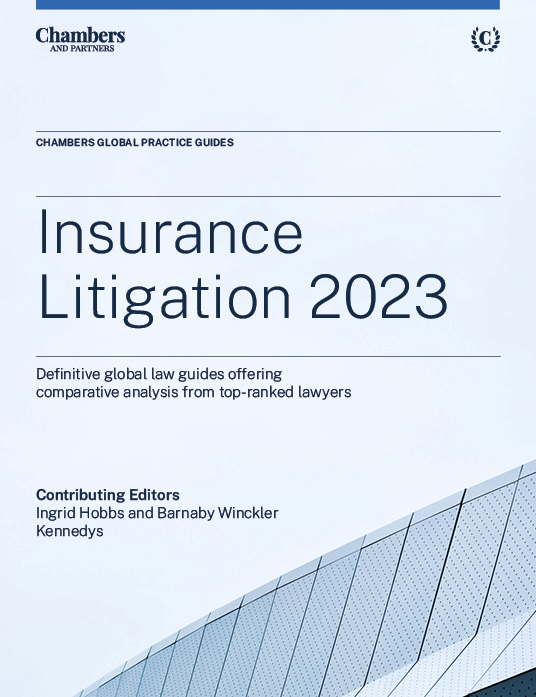
Insurance Litigation 2023
The Insurance Litigation 2023 guide features 13 jurisdictions. The guide provides the latest legal information on alternative dispute resolution (ADR), the enforcement of foreign judgments, the applicability of the New York Convention, coverage disputes, claims against insureds, insurers’ recovery rights, and the impact of data privacy concerns and climate change on insurance litigation.
Last Updated: October 03, 2023
Compare law and practice by selecting locations and topic(s)
Select Locations

Select Topic(s)

Please select at least one location and one topic to use the compare functionality.
Insurance Litigation: A Global Overview
In this Chambers guide, we again define insurance litigation to include disputes to which insurers or reinsurers are directly party, such as coverage disputes, but also disputes in which they are not named but have a financial interest as indemnifiers of one or more parties. The guide thus once more not only addresses the laws governing insurance contracts, but extends to issues such as how litigation is funded and other relevant aspects of insurance-related dispute resolution in each jurisdiction. Arbitration remains highly relevant, as many insurance contracts include arbitration clauses – meaning that coverage disputes are often resolved by one or more arbitrators, affording parties privacy and avoiding precedents being set. It follows that the relevance of any discussion of case law is limited to understanding what is actually happening in terms of dispute outcomes.
Long-term issues
The world continues to move on from the COVID-19 pandemic although a legacy of claims remains in multiple jurisdictions. As predicted in previous editions, the rise of “environmental, social and governance” (ESG) issues continues to preoccupy insurers who, like their insureds, are increasingly subject to climate-related disclosure obligations to regulators. Environmental claims arising from per- and polyfluoroalkyl substances (PFAS), often referred to as “forever chemicals”, have made headlines in both North America and Europe. In the past year there has been a rise in substantial employment liability compensation paid by financial institutions in the UK and that trend looks set to continue. The increase in cyber exposures appeared to have temporarily abated as certain bad actors were, at least for a time, thought to have been diverted by the war in Ukraine. However, the long-term trend remains, with major insureds increasingly recognising cyber exposures as among the biggest threats to their businesses.
More generally, innovation through the use of technology is poised to continue transforming the insurance industry and the businesses that it serves, facilitating growth and furthering broader ESG-related objectives. There have also been significant regulatory developments in relation to data protection and AI. The EU is implementing collective redress reforms that may, over time, significantly increase class action exposures in the EU. Finally, inflation and claims inflation remain significant concerns for insurers as they continue to drive up the overall cost of claims and make accurate reserving more challenging.
What next for insurance litigation?
As presaged in our comments last year, the war in Ukraine has, perhaps inevitably, given rise to substantial and complex insurance claims and has caused severe disruption to supply chains. This is sometimes linked by commentators to a wider discussion about whether globalisation is ending. The shifts in position witnessed in the US approach to trade and manufacturing – an approach which underpinned much of the post-WW2 global economic order – have coincided with visible trade falling from recent historic highs as a share of global output. However, in contrast, digital trade, boosted significantly by the pandemic, clearly continues to grow unabated. With it, the provision of legal services and insurance will continue to become more technology driven and potentially more remote from the end-customer. It remains to be seen what the long term implications will be for our reliance on courts and tribunals to resolve disputes. In the short term, at least, it seems that claims against insureds, and coverage litigation are unlikely to abate.
Conclusion
As we always emphasise, for all the global trends we may observe, most disputes are local and the rules and forums in which they are resolved vary considerably. For that reason above all, a guide such as this will hopefully be useful to those interested in insurance and the disputes in which it inevitably becomes implicated.

